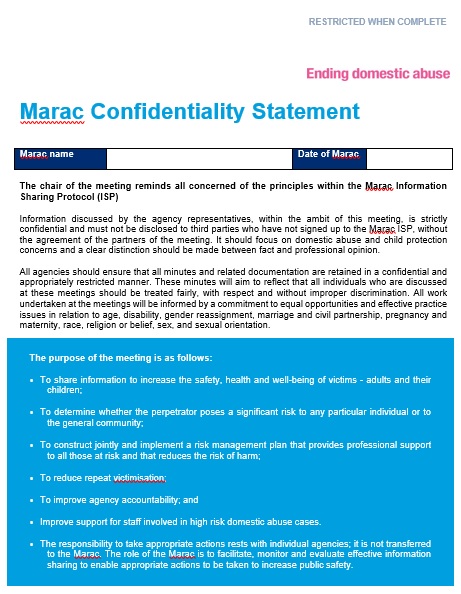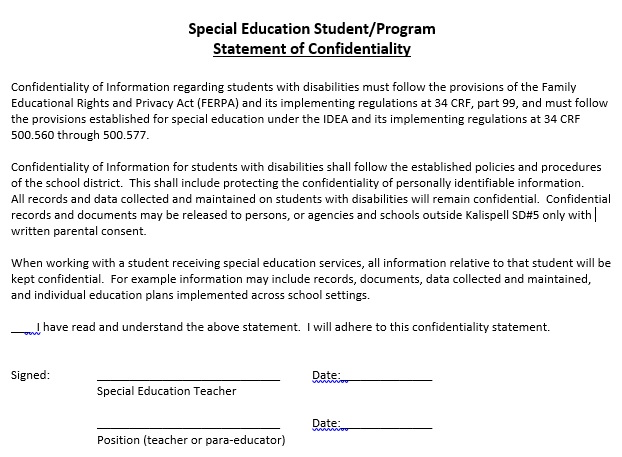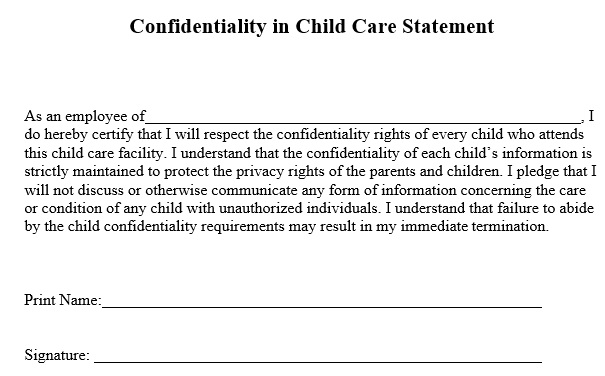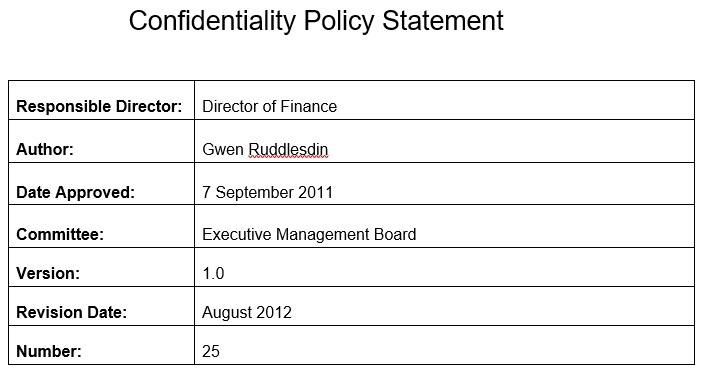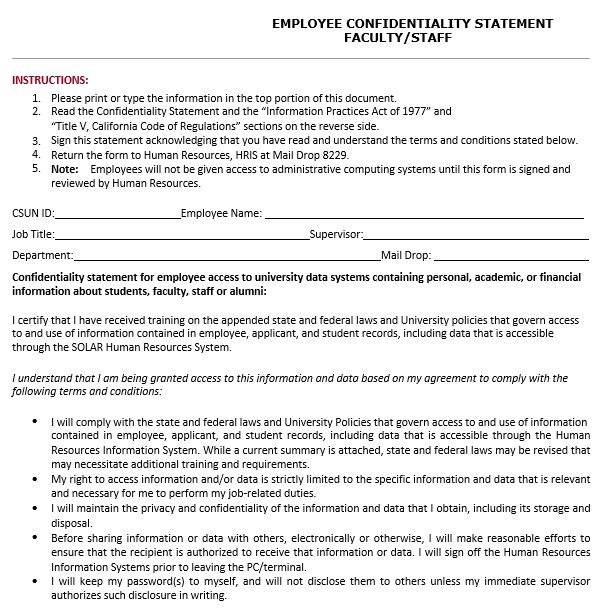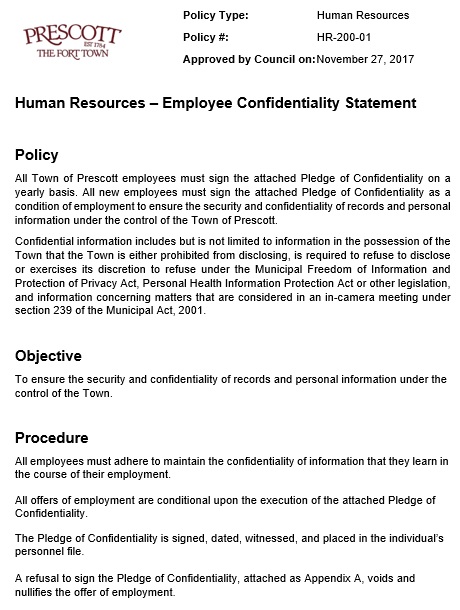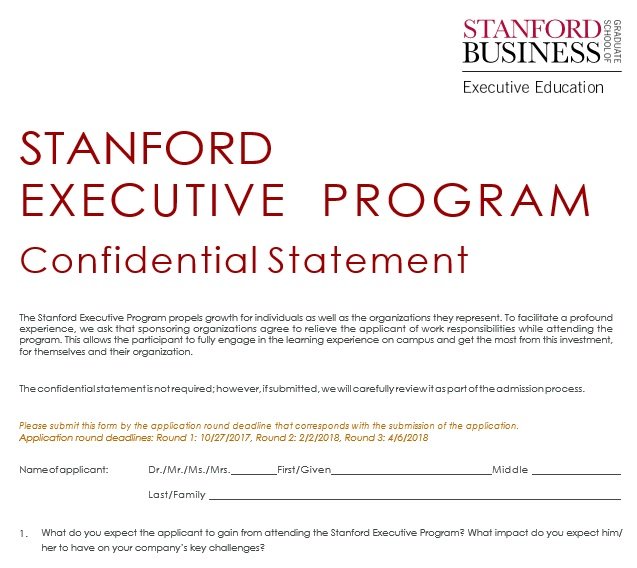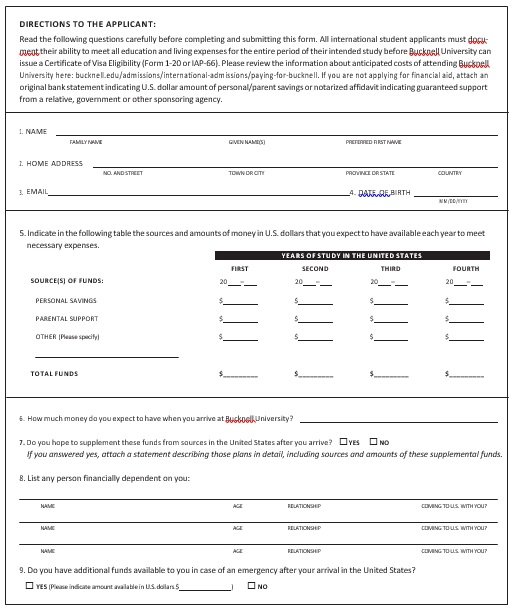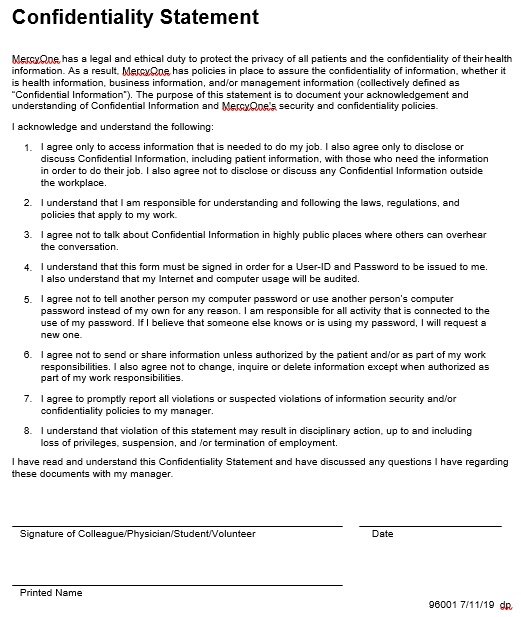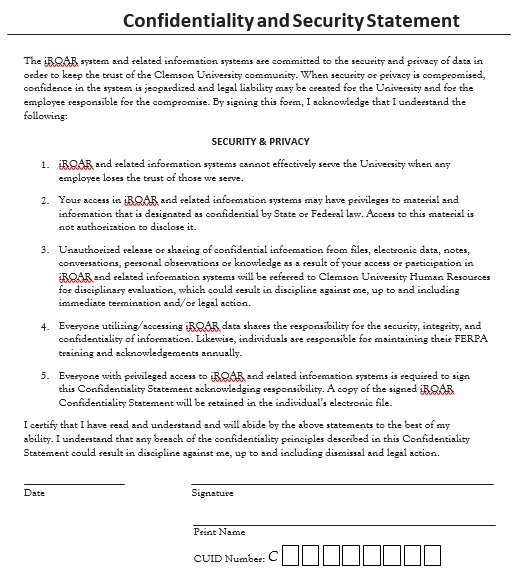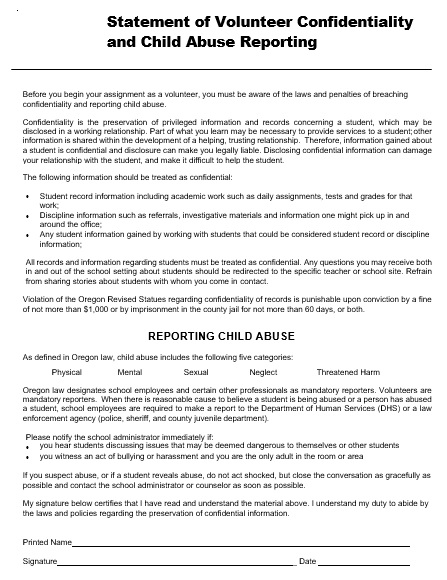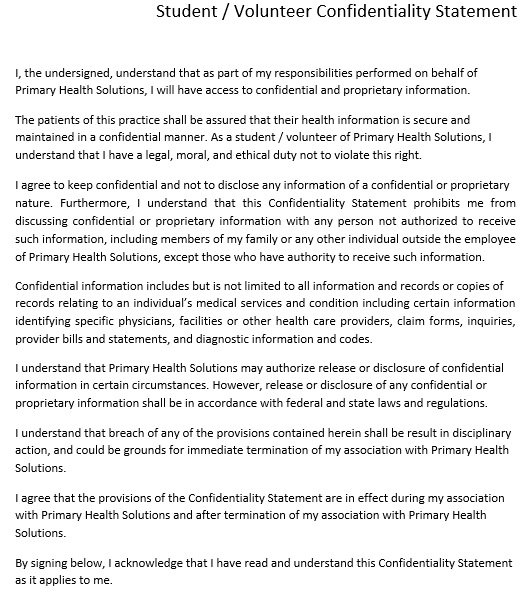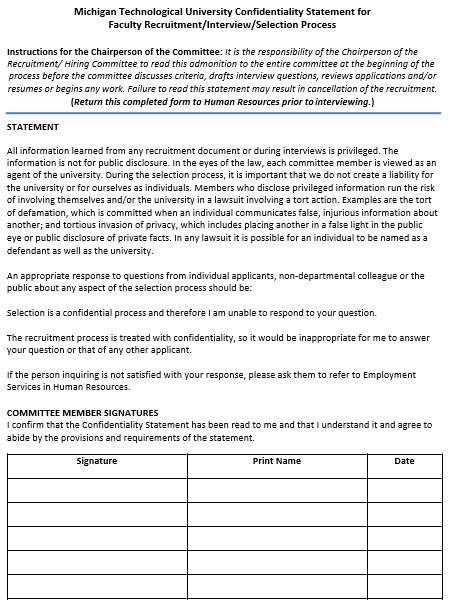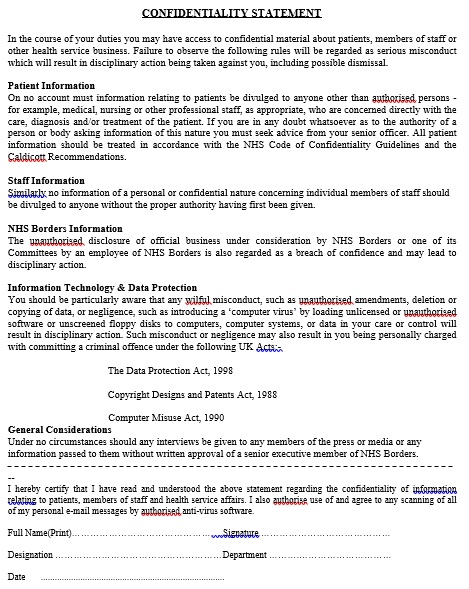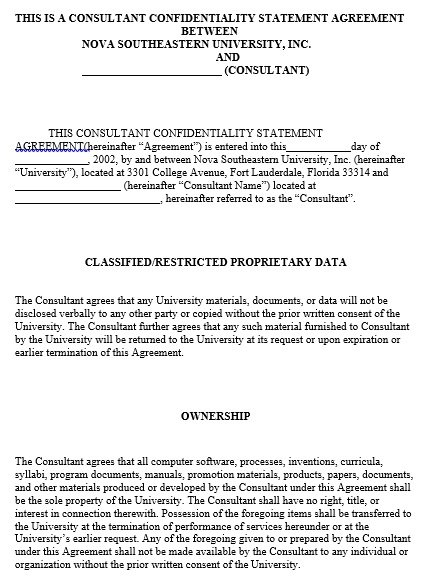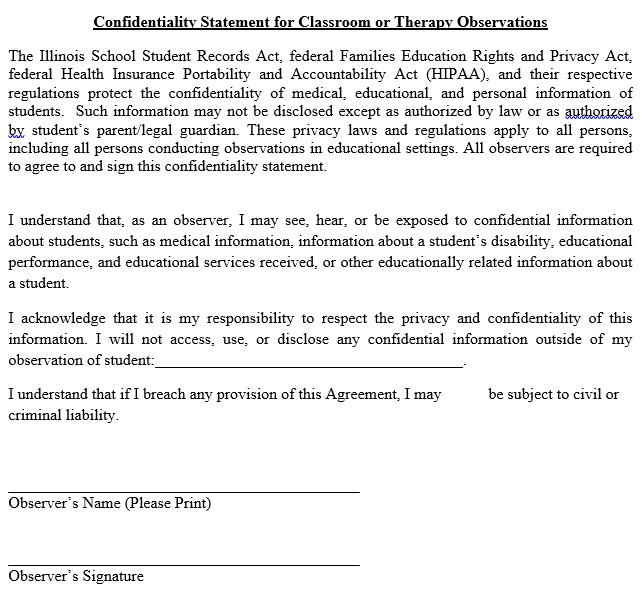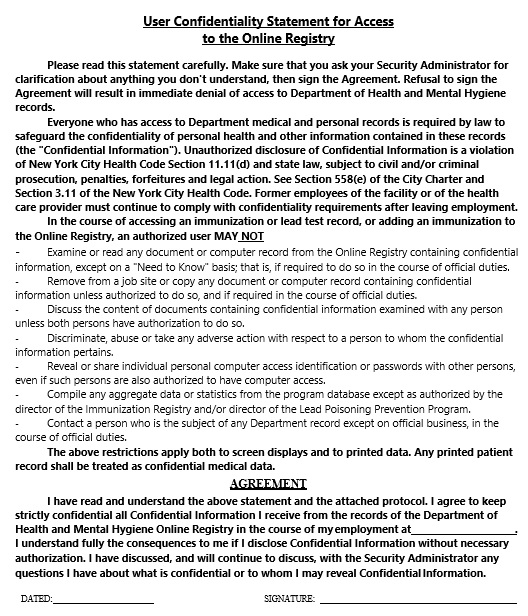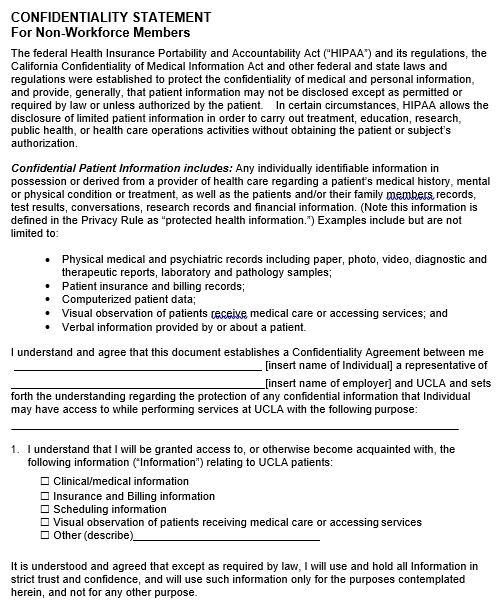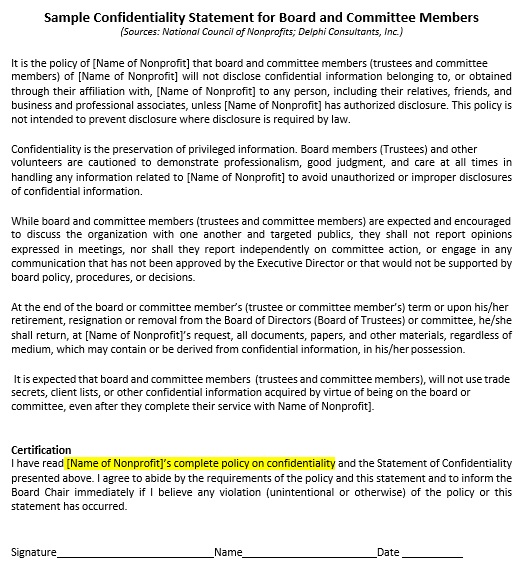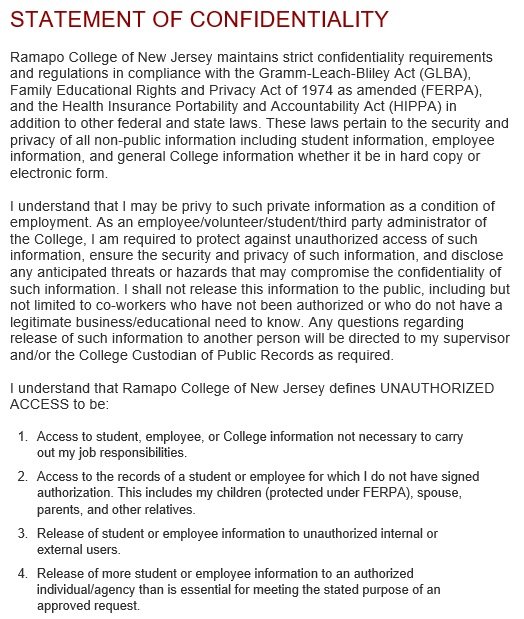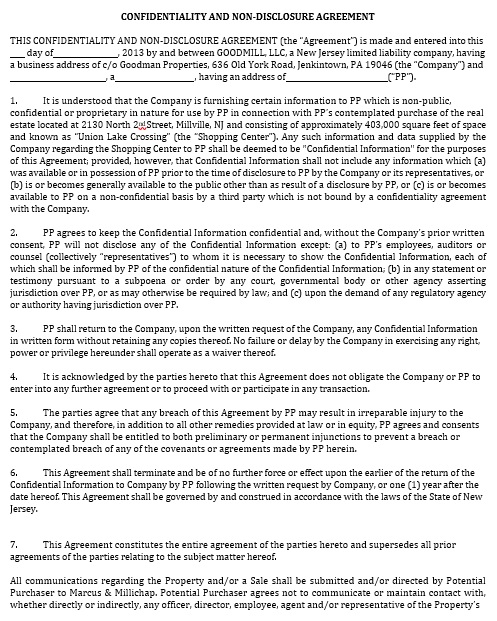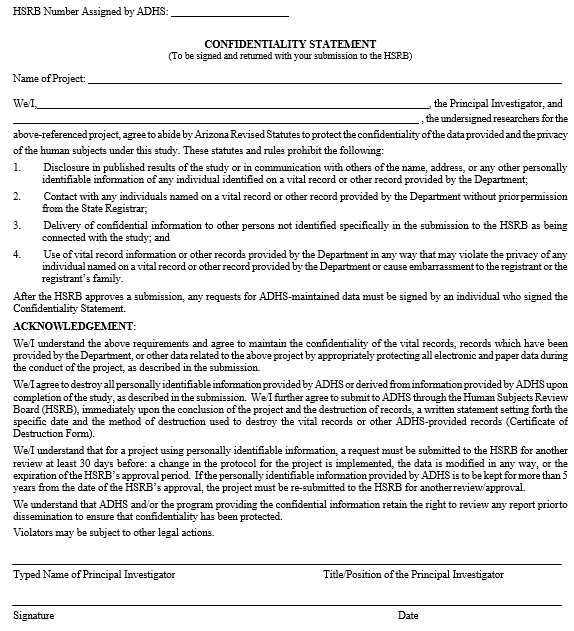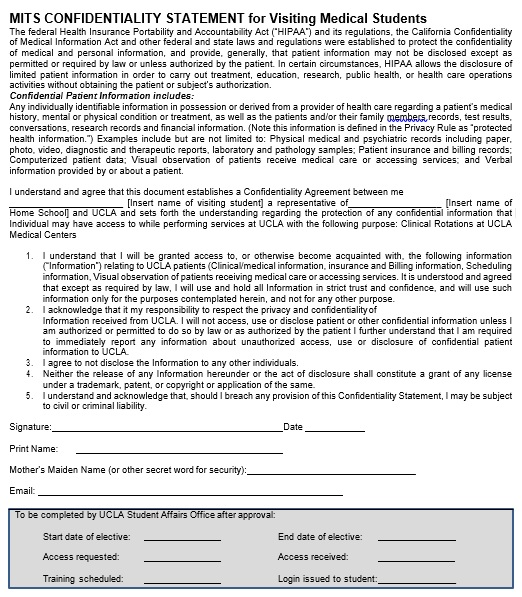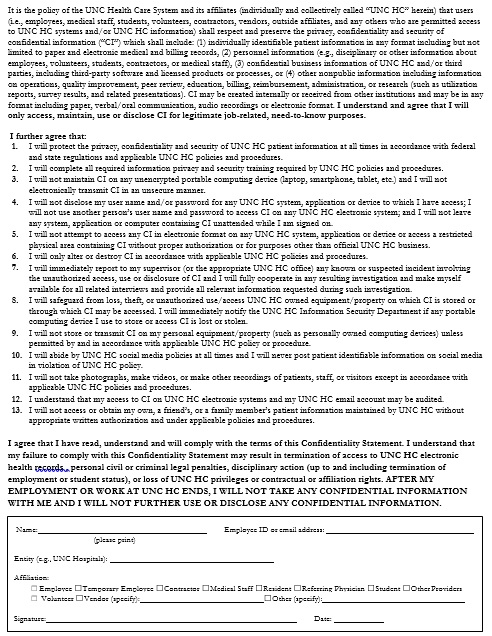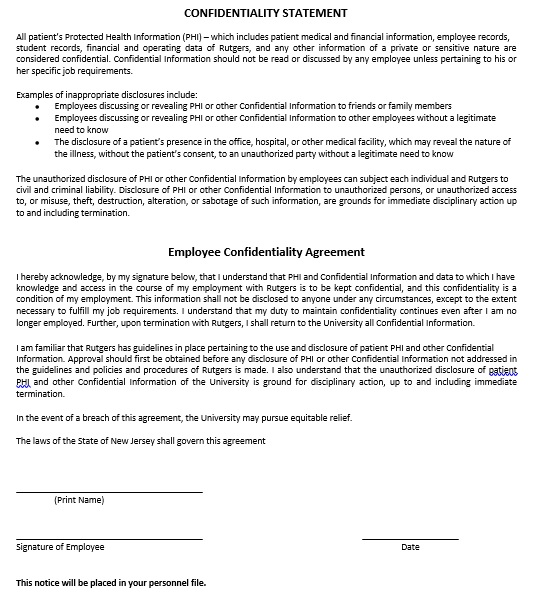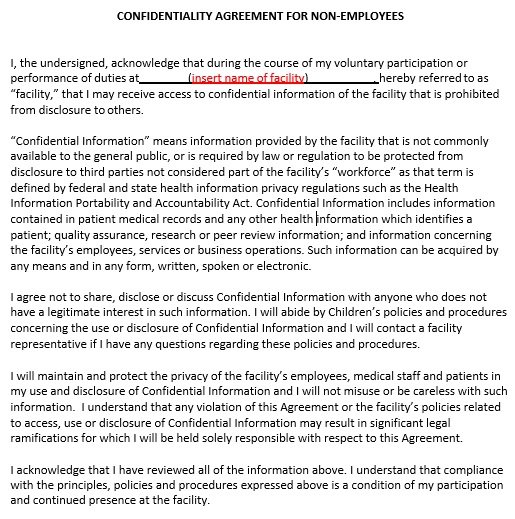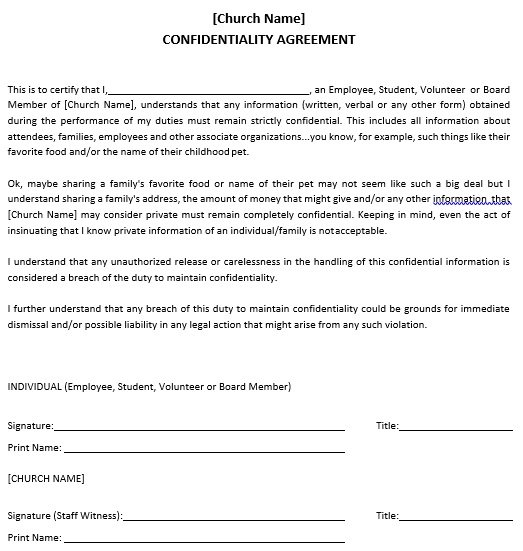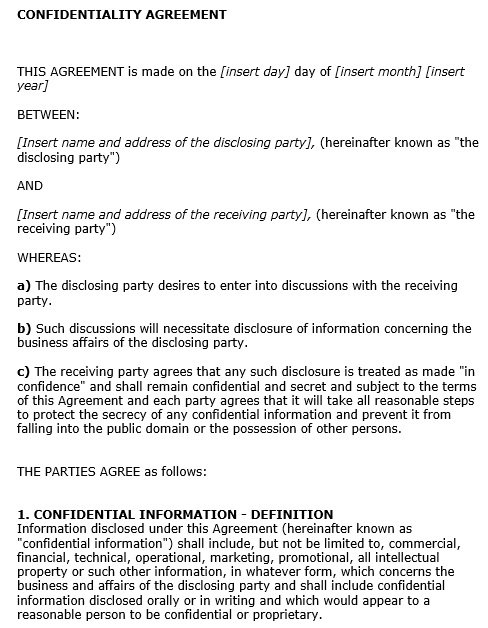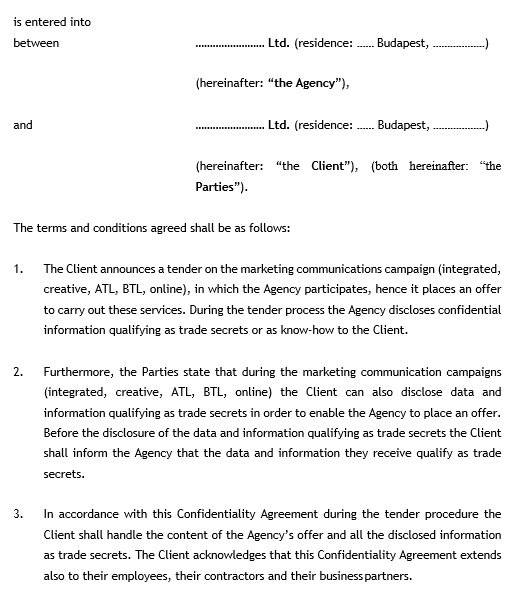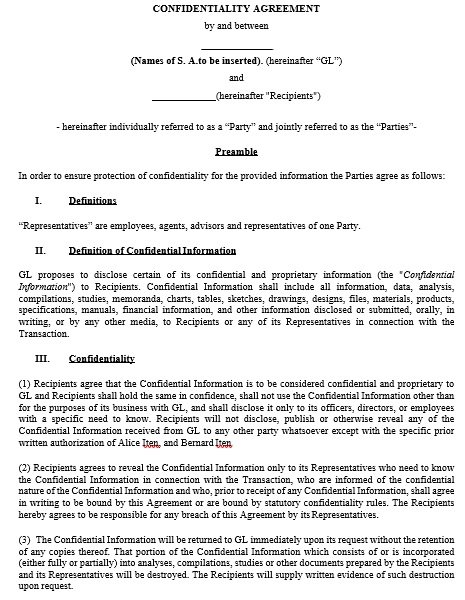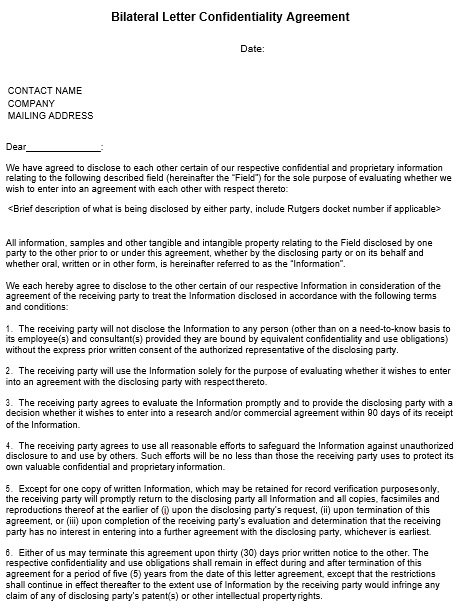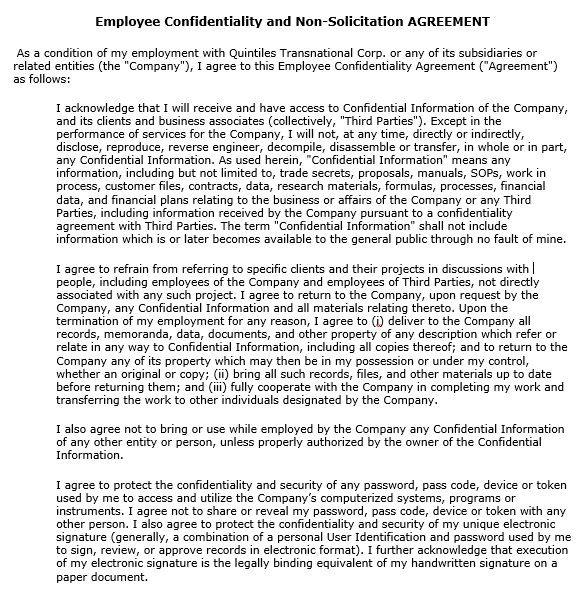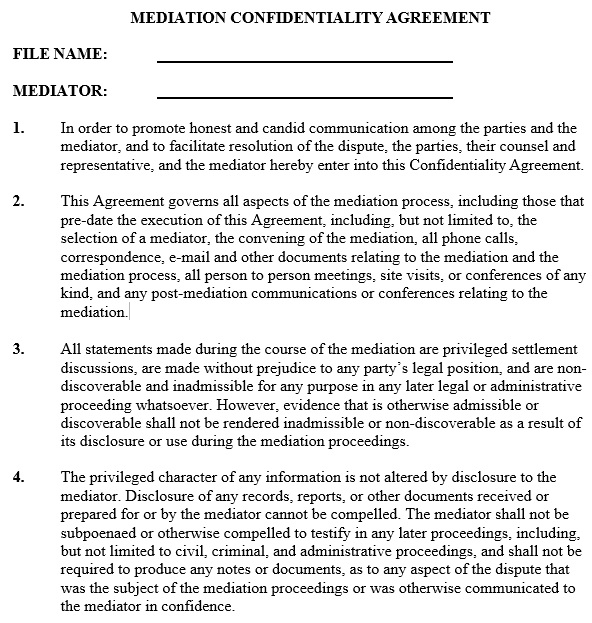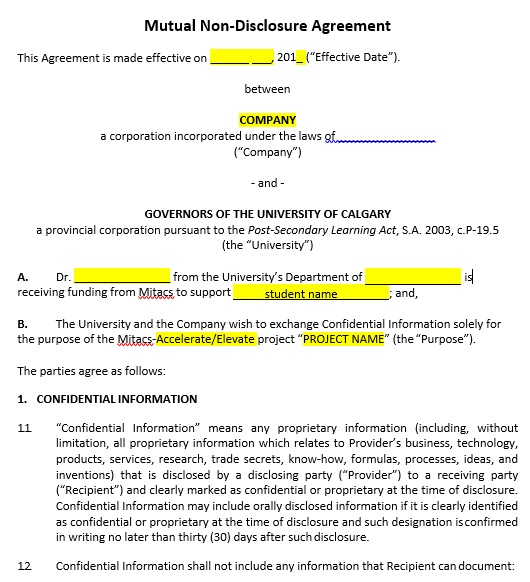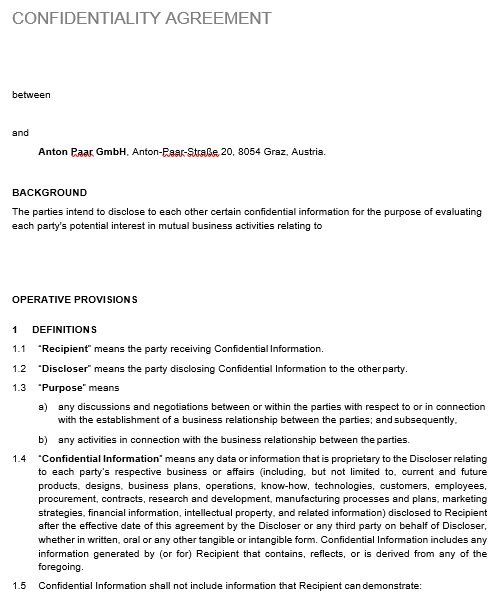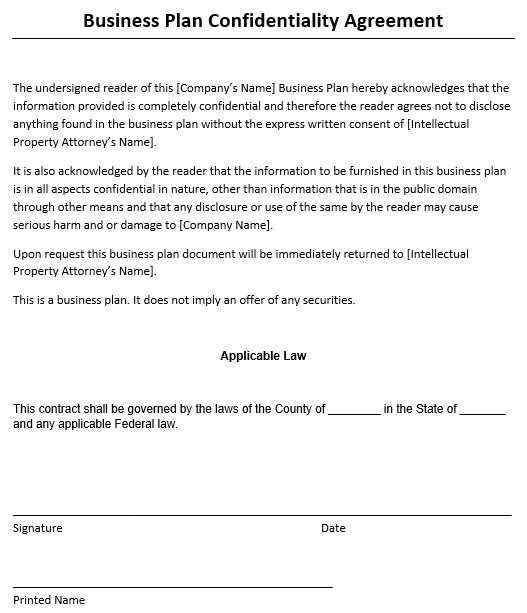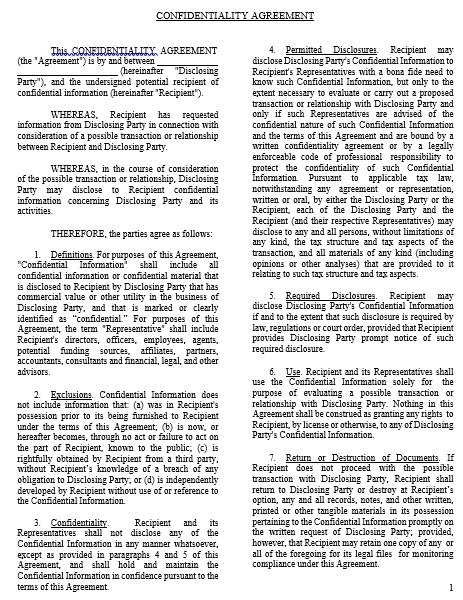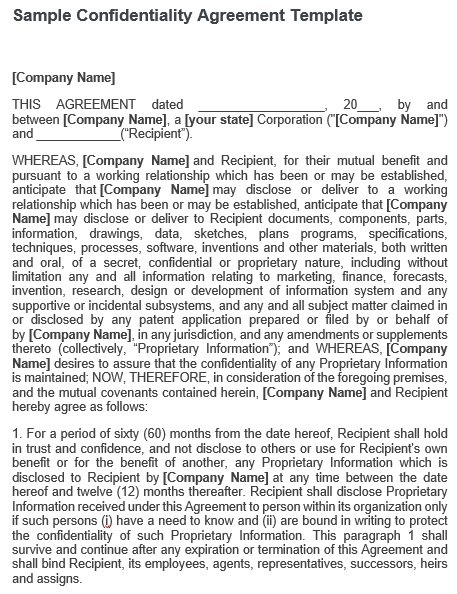A confidentiality statement and agreement template is a formal document that binds the involved parties to particular responsibilities regarding the disclosure of confidential information. Nowadays, the business growth depends on networking and meetings. Therefore, confidentiality statements are important to business information non-public.
Table of Contents
- 1 What basically confidentiality statement and agreement is?
- 2 What is confidential and non-confidential information?
- 3 Where to use a confidentiality statement?
- 4 What to include in confidentiality form?
- 5 What clauses should you include in a confidentiality agreement?
- 6 Different types of confidentiality statements:
- 7 How to write a confidentiality statement?
- 8 Free Confidentiality Agreement Templates [Samples & Examples]
- 9 When should a confidentiality agreement last?
- 10 What private information does a confidentiality agreement protect?
- 11 Conclusion:
- 12 Faqs (Frequently Asked Questions)
What basically confidentiality statement and agreement is?
A confidentiality statement and agreement is a formal legal binding document. It states that two party’s won’t profit from or share confidential information. In many business establishments, these agreements are given to the contractor or employee to make sure that confidential information doesn’t come out. Other names of confidentiality statement and agreement are;
- A non-disclosure agreement
- Confidentiality clause
- Non-disclosure form
- Secrecy agreement
- Propriety information agreement
What is confidential and non-confidential information?
Any facts, details, or data that are not a common part of the public domain are referred to as confidential information. These details are reasonably protected and have commercial value. There are several types of information that a Confidentiality Agreement can protect to disclose.
On the other hand, any information that becomes known to the public at large is referred to as non-confidential information.
Where to use a confidentiality statement?
Here are some situations where you would need to use a confidentiality statement;
- This type of agreement makes sure that the proprietary information won’t reach the industry competitors. So, this is the most common situation when this type of agreement becomes mandatory in industries.
- In the case of a consultant, it is used to explain the responsibilities of each party.
- Moreover, this agreement sets the standards for how to handle information. These standards are the restriction access to confidential information, other ways to protect the confidentiality, etc.
- During mergers, it protects the information about the purchase and the business agreement until the finalization of the merger.
- It can use as evidence in legal cases.
What to include in confidentiality form?
An effective confidentiality form should include the following basic parts;
State confidential information:
Here you have to state the specific information that the agreement will protect.
Parties involved:
Write the name of the parties involved in the agreement such as disclosing party, the receiving party, officers, agents, directors, advisors, etc.
The reason recipient knows the sensitive information:
The document should explain the reason that why the recipient should know the sensitive information.
Any limitations on confidentiality information:
Here you have to include the following information;
- Write the information that involved parties discussed before the agreement’s creation.
- The information that government has requested.
- Also, provide the information that the receiving party required about the disclosing party.
Responsibilities of the receiving party:
The responsibilities of receiving party are the correct use of information, not share the information with others, provisions of the disclosure, and the statement that states the recipient can’t work in the same industry after leaving the employment. Additionally, also state that during the duration of disclosing party employment, he will have ownership of anything that the recipient has developed.
Time frame:
Write the date the contract goes into effect until the time it expires. The agreement will expire after a term agreed upon and when the project ends. Typically, the average timeframe would be between 2 to 5 years.
Discloser to the receiving party:
This section defines that the receiving party agreed to maintain the confidentiality of information. Before disclosing information, the recipient should take into account the degree of the provision.
An injunctive clause:
In the end, this clause provides the right to the disclosing party to hinder the recipient from breaching the agreement.
What clauses should you include in a confidentiality agreement?
A confidentiality agreement should include the following clauses;
Non-competition clause
The purpose of this clause is to prevent an employee from using insider knowledge to compete with their employer for business. When the employee works for the company or for a specific length of time after they leave then this term may be in effect.
A non-competition clause generally prohibits a person from providing money, or skilled labor to a competing business or individual.
Non-solicitation clause
The main aim of this clause is to prevent an employee from interfering between the relationships of the employer with other employees or contractors. When the employee works for the company or for a specific length of time after they leave then non-solicitation term may be in effect.
This clause generally prohibits an individual from encouraging an employee or contractor to quit. It also prohibits them to discuss other employment opportunities with employees or contractors.
Different types of confidentiality statements:
This document commonly falls into two categories;
One-way confidentiality statement:
By signing this agreement, the parties involved won’t disclose the information that another party holds. It is the most common type of the agreement. It is used by the company when hiring an employee to prevent confidential information.
Mutual confidentiality statement:
According to this statement, both parties wouldn’t share each other’s information. When two parties start working together they signed this agreement.
How to write a confidentiality statement?
Let us discuss some basic steps for writing this document;
Outline of the confidential relationship:
- As it’s a formal document, you should use standard contract. Write it in single-spaced paragraphs having double space in between them.
- Next, select what type of confidentiality you should use, we have discussed above two different categories of this statements.
- State the information which you want to keep confidential.
- Also, mention the excluded information from the agreement i.e. non specific items. There is no need to protect or classify broad categories of information as confidential.
Terms and conditions of the agreement:
- Outline the responsibilities and duties of the receiving party of the confidential information. You should also set the standard for preventing and keeping confidential information. Confidential standards may contain restriction to access information and taking important steps to maintain the safety of the information. Moreover, it shouldn’t fall into the hands of outsiders.
- Next, specify the time frame and agreement validity. Don’t indicate the ending and starting date of the agreement. This is because it clarifies that when the agreement takes effect and how long you plan to enforce it. When specific occurrence happens, the confidentiality timeframe may end.
- Most importantly, explain the penalties for breach of contract. This section is important in order to prevent information confidentiality. The type of penalties usually depends on the information you disclosed. The more sensitive the information is the more serious penalty it would be.
- Include the boilerplate i.e. any miscellaneous provisions as you see fit. You should use separate section for it.
- In the end, affix the signatures of all involved parties to make the document valid.
Free Confidentiality Agreement Templates [Samples & Examples]
When should a confidentiality agreement last?
There is a specific date on which the obligations created by a confidentiality agreement can be ongoing or end. In order to specify an end date, you should consider when the information no longer needs to be confidential.
The information should remain confidential indefinitely in case a date isn’t specified. It means confidentiality will not expire. However, you should always keep the trade secrets as confidential information. For the competitiveness of the company, these are considered valuable business assets.
What private information does a confidentiality agreement protect?
A confidentiality agreement protects the following private information;
Customer information
The data of customer or client like their names, contact information, internet browsing history, GPS tracking, etc.
Intellectual property
Any tangible assets having commercial value such as;
- Copyrights
- Patents
- Trademarks
- Trade secrets
Marketing, product, and service details
Proprietary details like strategic functions, marketing plans, etc.
Business operations and accounting details
Intangible business assets including;
- Data on vendors
- Staff
- Fixed costs
- Other internal financial reports
Conclusion:
In conclusion, a confidentiality statement and agreement template is a useful tool that allows you to make a confidentiality statement in a more formal way. This agreement binds the involved parties to particular responsibilities regarding the disclosure of confidential information. It is usually given to the potential employee or contractor to keep the important information confidential. Furthermore, keeping the information confidential is important for any business growth.
Faqs (Frequently Asked Questions)
Yes, it is a legally binding document and enforceable in court. Make sure you should write it with utmost clarity and treated very seriously. You may face serious financial consequences if you breach a confidentiality agreement.
Both NDA and confidentiality agreement terms can be used interchangeably. For cases of mutual information transfer, the term “confidentiality agreement” is used, while NDA is more often one-sided.

